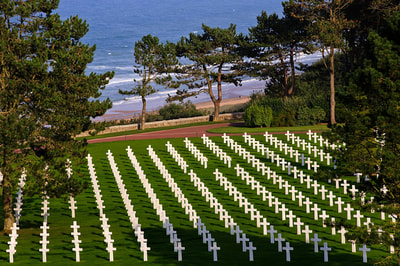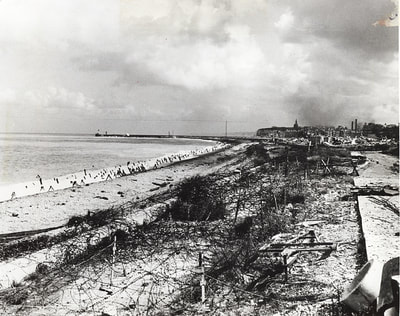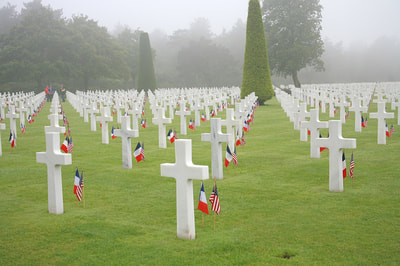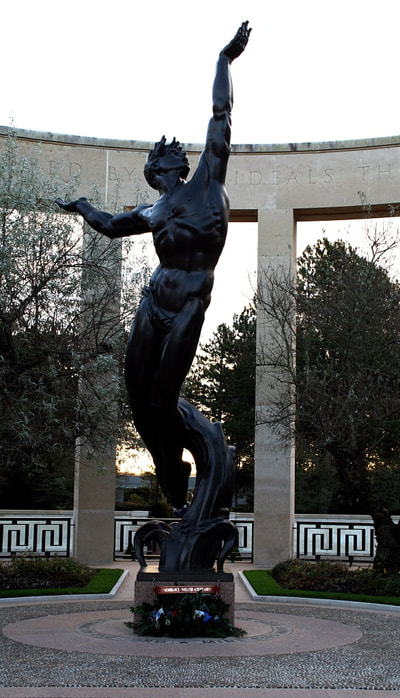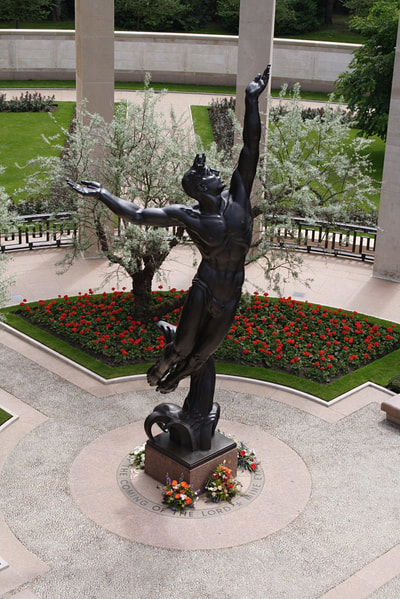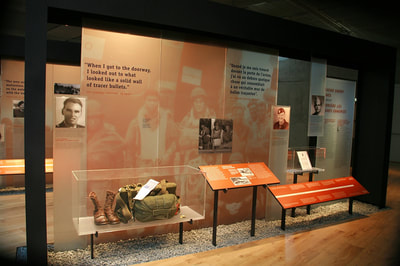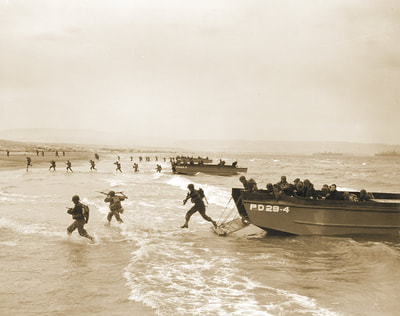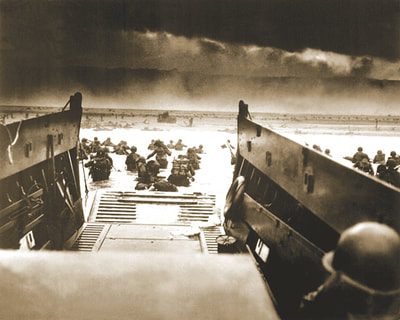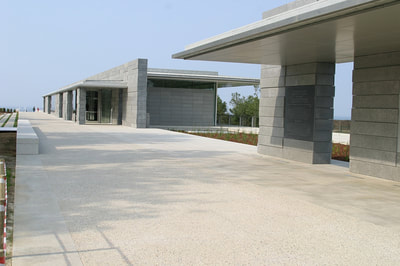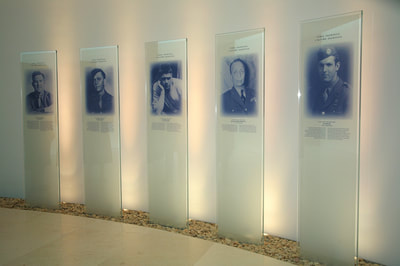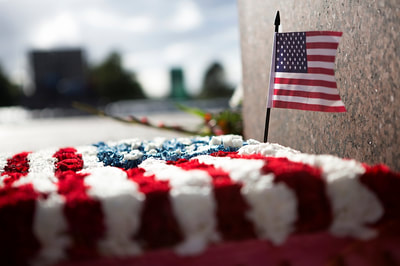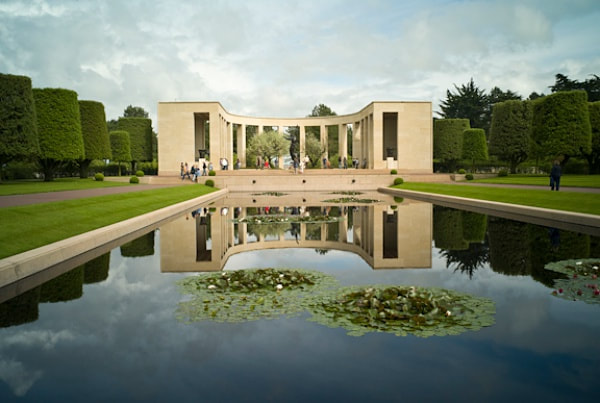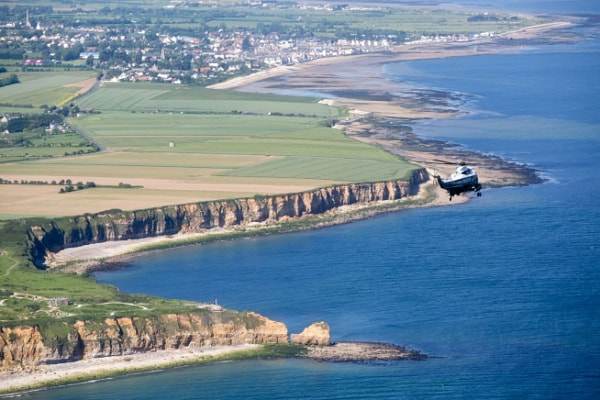NORMANDY AMERICAN NATIONAL CEMETERY
Calvados
France
Unless a copyright is indicated information on this ABMC web site is in the public domain and may be copied and distributed without permission. Citation of the ABMC as source of the information is appreciated.
American Battle Monuments Commission
Location Information
Normandy American Cemetery sits on a cliff overlooking Omaha Beach and the English Channel, east of St. Laurent-sur-Mer and northwest of Bayeux in Colleville-sur-Mer, 170 miles west of Paris. The cemetery may be reached by automobile via highway A-13 to Caen, then N-13 to Bayeux and Formigny, continuing on D-517 towards St. Laurent-sur-Mer and D-514 to Colleville-sur-Mer, where signs mark the entrance to the cemetery. There is rail service between Paris (Gare St. Lazare) and Bayeux, where taxicab and tour bus service is available; travel by rail takes 3 hours. Hotels are available at Bayeux and Port-en-Bessin.
The cemetery is open to the public daily except on December 25 and January 1. Hours of operation are 9 a.m. to 6 p.m. from April 15 to September 15, and 9 a.m. to 5 p.m. the rest of the year. It is open on host country holidays. When the cemetery is open to the public, staff members are on duty in the Visitor Centre to answer questions and escort relatives to grave and memorial sites.
The Normandy American Cemetery and Memorial in France is located on the site of the temporary American St. Laurent Cemetery, established by the U.S. First Army on June 8, 1944 and the first American cemetery on European soil in World War II. The cemetery site, at the north end of its ½ mile access road, covers 172.5 acres and contains the graves of 9,387 of our military dead, most of whom lost their lives in the D-Day landings and ensuing operations. On the Walls of the Missing in a semicircular garden on the east side of the memorial are inscribed 1,557 names. Rosettes mark the names of those since recovered and identified.
The memorial consists of a semicircular colonnade with a loggia at each end containing large maps and narratives of the military operations; at the centre is the bronze statue, "Spirit of American Youth." An orientation table overlooking the beach depicts the landings in Normandy. Facing west at the memorial, one sees in the foreground the reflecting pool; beyond is the burial area with a circular chapel and, at the far end, granite statues representing the U.S. and France.
Normandy American Cemetery sits on a cliff overlooking Omaha Beach and the English Channel, east of St. Laurent-sur-Mer and northwest of Bayeux in Colleville-sur-Mer, 170 miles west of Paris. The cemetery may be reached by automobile via highway A-13 to Caen, then N-13 to Bayeux and Formigny, continuing on D-517 towards St. Laurent-sur-Mer and D-514 to Colleville-sur-Mer, where signs mark the entrance to the cemetery. There is rail service between Paris (Gare St. Lazare) and Bayeux, where taxicab and tour bus service is available; travel by rail takes 3 hours. Hotels are available at Bayeux and Port-en-Bessin.
The cemetery is open to the public daily except on December 25 and January 1. Hours of operation are 9 a.m. to 6 p.m. from April 15 to September 15, and 9 a.m. to 5 p.m. the rest of the year. It is open on host country holidays. When the cemetery is open to the public, staff members are on duty in the Visitor Centre to answer questions and escort relatives to grave and memorial sites.
The Normandy American Cemetery and Memorial in France is located on the site of the temporary American St. Laurent Cemetery, established by the U.S. First Army on June 8, 1944 and the first American cemetery on European soil in World War II. The cemetery site, at the north end of its ½ mile access road, covers 172.5 acres and contains the graves of 9,387 of our military dead, most of whom lost their lives in the D-Day landings and ensuing operations. On the Walls of the Missing in a semicircular garden on the east side of the memorial are inscribed 1,557 names. Rosettes mark the names of those since recovered and identified.
The memorial consists of a semicircular colonnade with a loggia at each end containing large maps and narratives of the military operations; at the centre is the bronze statue, "Spirit of American Youth." An orientation table overlooking the beach depicts the landings in Normandy. Facing west at the memorial, one sees in the foreground the reflecting pool; beyond is the burial area with a circular chapel and, at the far end, granite statues representing the U.S. and France.

